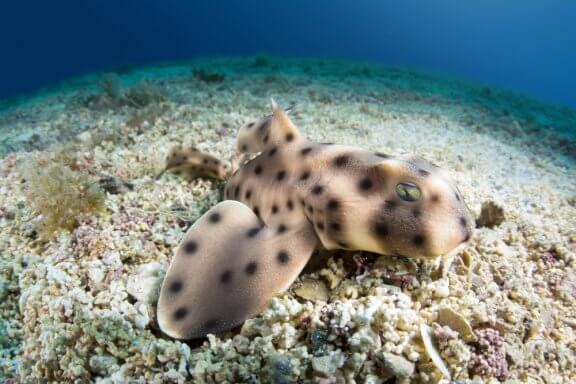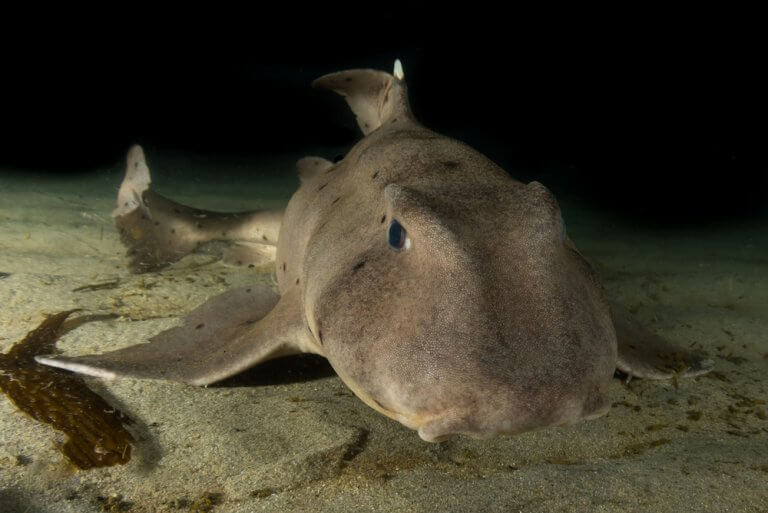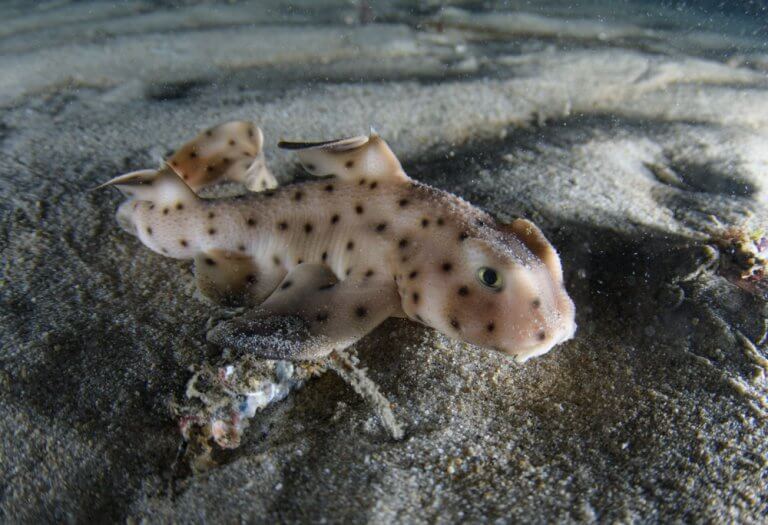The Horn Shark: Habitat and Characteristics

There are so many species in the sea that it feels like we’re constantly discovering new ones. For example, there are lots of different types of sharks, each with specific characteristics. Want to learn more about them? Well, today, we’re going to tell you about the horn shark. Read on!
Everything you need to know about the horn shark
Characteristics
Its scientific name is Heterodontus francisci. Its name might make it sound big and scary, with a huge horn, but it’s actually the smallest of all the different types of shark. It also has very interesting colors.
This type of shark was first discovered in 1855. Charles Frederic Girard led the expeditions and research, and published his findings in the Proceedings of the Academy of Natural Sciences of Philadelphia.
These sharks have a small, wide head with a rounded snout. Unlike other fish, horn sharks don’t have a membrane on their eyes. They have a tiny, curved jaw with 19-26 rows of teeth on the upper part and 18-29 on the lower part.

They have cylindrical bodies with soft, tender scales that stick out somewhat. Their skin can take on some amazing colors, though it’s generally monotone, with dark spots on their back.
They can grow to nearly 4 feet long, though they’re generally closer to about 3.3 feet. They have two sickle-shaped dorsal fins with spines on their front. Those spines are generally smaller in horn sharks that live in reefs, because all the rubbing against other surfaces wears them down.
The habitat of a horn shark
Horn sharks live in the eastern Pacific Ocean, around the southern coast of California and Baja California. They have also been spotted in San Francisco, Ecuador, and Peru.
They generally live closer to shore, at about 6.6-36.1 feet deep. But during the winter, they generally go down to deeper waters, around 100 feet deep. Young horn sharks less than 2 feet long generally prefer flat, sandy areas 130-490 feet deep. As they get older, they start to move to shallower waters.
They generally stick to a range of around 11,000 square feet, though the farthest recorded distance a horn shark has traveled from its home is just under 10 miles.
Once they choose a place to live, they generally stay around that area their whole lives. Even if they leave for a while, they tend to come back to that first spot. There aren’t many fish that do this.

Behavior
When you heard the word “shark,” you probably immediately think of a dangerous animal. The horn shark truly isn’t, though. They’re actually slow, clumsy swimmers, probably because they don’t have good eyesight.
They like being alone, and are nocturnal. In other words, they look for food at night and stick around the same area during the day–generally somewhere like a cave or a crevice.
They mainly eat hard-shelled mollusks, sea urchins, and crustaceans (crabs, shrimp, etc…). From what we can tell, their bite is much more powerful than you would think from looking at the size of their jaw.
They use suction to capture their prey, and put it in their mouths. From there, they use their front teeth to tear up the prey and their back teeth to clean up the job.
This is all we have to tell you about the horn shark, a true natural marvel. We were fascinated when we first found out about it, and wanted to share our wonder with you!